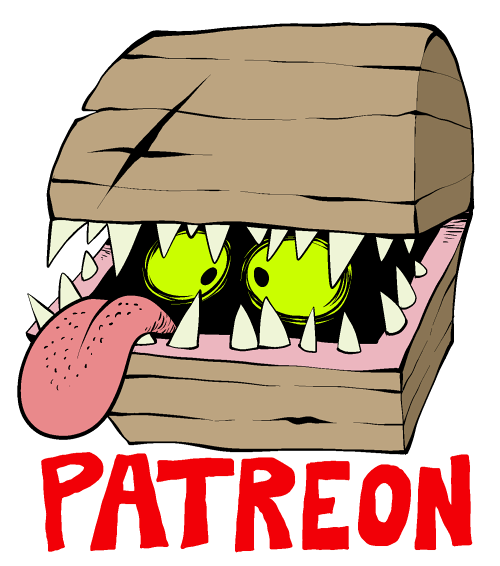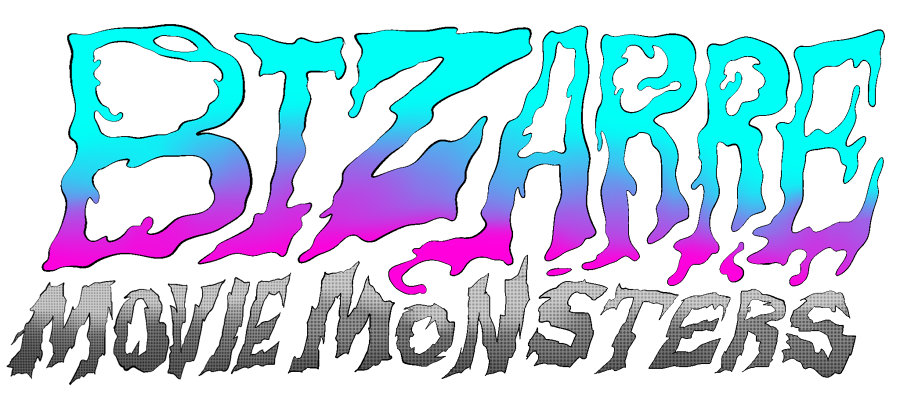
By Jonathan Wojcik
ENTRY 33: SAVAGELAND

We're officially in the once-monthly entries, which are meant to be exclusive to
My patreon until rounded up and posted to the site! This month's entry is, at the time of this writing, completely free on Tubi
and here on youtube, but even if you're fine with most horror films, there are aspects of this one that some viewers may find too distressing.
Phil Guidry, Simon Herbert and David Whelan are all credited as producers, writers and directors of this intensely grim mockumentary, though as a mockumentary, it's kind of impossible to review or overview Savageland's story the normal way.

Savageland revolves around the fictional Arizona town of Sange De Cristo, which bordered Mexico and had only 57 permanent residents until the events of June 2, 2011, when nearly the entire population was brutally murdered. Nearly the entire population, that is, except for just one man, Francisco Salazar, who was subsequently blamed and tried for the entire massacre.
Unlike some films in mockumentary format,
Savageland doesn't seek to convince us that this all really happened in our own world. In its continuity, these events were a nationwide controversy that not only divided America but continue to rage on.

Further, while Savageland is a film about monsters, not all of them are the literal nonhuman variety. As an undocumented immigrant, Salazar is demonized as the very face of "border-jumping criminals," subjecting him (and the audience) to an all-too-accurate glimpse into the deepest depths of America's xenophobia, racism and paranoia. The "documentary" runs voice clips and interviews from across the full spectrum of opinion, from those who recognize that his treatment wasn't fair to those who hope all of "his kind" would hang; and by "his kind," they don't always mean serial killers.
The easiest way to go over the plot may be to highlight the testimonies and opinions of each major player in the documentary:

There's a
lot of villains in this story, not the least of which is the collective hive mind of media sensationalism itself, but you'll truly come to loathe John Parano, sheriff of the neighboring town of Hinzman. Parano is played by independent actor George Lionel Savage, who positively
nails the smug self-importance of a man who's been elected and re-elected sheriff for over thirty consecutive years and considers himself a hero for "bringing in" a man who was, it should be noted, unconscious at the time of his "capture."
Parano, like the rest of the persecution, wholeheartedly believes that Salazar alone managed to sneak around his neighborhood, without any firearms mind you, and personally slaughter every man, woman and child in every home, every business, and the local church over the course of a single night. The mental hoops he's willing to bend and twist through to rationalize this are disturbingly believable, justifying his absurd conclusions any way he can. You can never underestimate what a true "psychopath" is capable of! He
fits the profile any expert can identify! You don't know what happened either way, because you weren't there, and neither was he but
he's the sheriff, so
checkmate.

The only personality more despicable than the corrupt law is radio host
Gus Greer, whose willingness to sink the conversation into the deepest abysses of fearmongering and conspiracy is clearly inspired by several real-world examples who shouldn't be necessary to name these days. When Greer says it's not only believable, but
fully expected for one small Mexican man to obliterate an entire community in only hours, his millions of listeners don't care about facts or logic, and the only reason anyone would even want to question that narrative is if they simply hate America enough to want this kind of thing to happen
again, which it
will if we don't finally "wake up" and "do something" about the invading army of "illegals" eroding everything our Great Nation allegedly stands for.

Fortunately, not everyone is just a malicious ignoramus - in this film's story or in reality. The film doesn't shy away from the corruption and brutality of our immigration system and its enforcement, but one man who has Salazar's back is an employee of the local border patrol. Not a state cop who thinks he's protecting our country from a hostile takeover, but the kind of guy who took the job because there just aren't a whole lot of other options, and does his best to help get people get someplace safer. He takes the camera crew (and viewers) on a walk-through of the entire town, following paths based on both Salazar's testimony and the prosecution as he highlights every gaping hole in the allegations.
One of the most shocking details of the massacre comes to us through this tour: that several people climbed the town's water tower to escape the carnage. There's already no way anybody could have felt that cornered by a single, normal, human killer, nor terrified enough to subsequently
leap to their deaths rather than face that killer.

A professional photographer is also interviewed throughout the documentary, a man who has documented tragedies and wars up-close since as early as Vietnam. He knows doctored photos when he sees them; he knows a guy like Salazar didn't have the technology to convincingly fake an entire roll of
undeveloped film.
...But why are we talking about
that now? Because Salazar was a photographer as a hobby, and as he ran through town that night, he kept snapping all the pictures he could. Why he would bother to do so is another of the story's mysteries, but before the events of the story, he took a lot of artistic photographs of a local family that he was close friends with, especially their youngest daughter. None of these were secret or candid photos, and may even have been at the family's request for all we know, but you can already imagine the horrible assumptions guys like Gus Greer make about this...especially since his other favorite subject of photography was always dead wildlife, something the Sheriff especially considers open-and-shut proof of sick and twisted sadism.

Historical author Lawrence Ross plays himself, adding a little more sense of authenticity to the narrative, but believes neither in the serial killer theory nor the allegations of a paranormal event. He believes the town, consisting largely of other immigrants, was wiped out as an act of terrorism by a hate group likely in league with the Hinzman police department. While incorrect, this
is the most rational explanation any character ever offers, as it ties in to several real-world historical precedents.
The actual nature of the violence, however, is still more than a little puzzling, which we'll get to soon enough, and Lawrence would be forced to accept the possibility of something stranger going on when he himself retrieves and leaks Salazar's last camera roll.

Monica Davis is the psychiatrist assigned to interview Salazar during his trial. Salazar himself never spoke a single word in court, or really to
anyone other than Monica, and only in what limited snippets she could coax out through his ongoing state of dissociative trauma. With Salazar unavailable for interview by the documentary, Monica's evaluation of the frightened, haunted man is unfortunately the only direct window anyone has into his side of the story.
Piecing together what Salazar told Monica and what the forensic team were able to unravel, we know that everything began when an injured, bleeding boy came to Salazar's house, seemingly for help, only for Salazar to kill him in what he maintained was self defense. From there, he headed into town to seek help, only to witness what was happening to his friends and neighbors.

The lawyer assigned to Salazar's defense borders on another "villain" of the story, though more through gutlessness than through malice; it's obvious that no thought went into choosing him for the job, as it was only the third case in his entire career, and that he obviously didn't want the notoriety he might have if he tried too hard to defend the innocence of anyone against such severe allegations. Refusing to offer any personal opinion or theory on the situation, the best he was willing to muster was an insanity plea - conflicting with Monica's established evaluation - and he made no known effort to fight the court's decision to reject Salazar's photographs as evidence, agreeing with those who felt the photos on their own don't conclusively prove anything.
If you find this unrealistic, I regret to inform you that America's justice system does in fact reject a lot of photographic and video evidence regardless of how authentic it may or may not be. It also has a tendency to
accept photographic or video evidence regardless of how authentic it may or may not be. It's pretty much a crapshoot.

We mentioned earlier that Salazar was friends with a local family, but you might have guessed that none of them survived. What's surprising is that not all of them were necessarily claimed by the slaughter itself; a devoutly Christian family who operated the local church, forensics would discover that the father killed most of his own family with a machete before taking his own life. The audio of a harrowing final phone call implies that he believed an apocalyptic event had begun - which, as we'll learn, was not all that irrational - and wished to spare his loved ones from suffering when it became clear there would be no escape.
Only the daughter, Grace, "escaped" her dad's mercy killing, albeit for the same reason Salazar ran
into town rather than escaping while he still could: he knew Grace and other children would still be at school, potentially trapped.

There are many other characters interviewed or discussed to a lesser degree than these key players; from random nobodies offering their "two cents" to surviving family who weren't present at the time to add to the body count, including Salazar's own mother and sister. One of the secondary interviewees that I really like is the widow of a hunter Salazar was alleged to murder almost as soon as he fled his own home. She's another character standing up for the accused, because for one thing, she personally knew Salazar and she doesn't believe for a second that he was a monster. For another, all the real proof she needs is her unwavering confidence that her husband could have far too easily kicked Salazar's ass. She doesn't say it in terms that blunt, no, but it is virtually her entire argument, and that's as sweetly funny as it is touching.
So now, we know the accusations made against this poor guy, and we've seen a detailed cross section of the debate that gripped America as he was taken to court, but I've held back the details of "the event" until now.
We're going to jump
straight from here to the review of our less human, less realistic villains:
MONSTER ANALYSIS: "...THE LIVING DEAD?"

Savageland is billed as a "zombie movie," and it has enough genre elements that it isn't unfair to consider it such, but that still does a disservice to the ambiguity and terror of these flesh-eaters. We never technically, actually see a single on-screen monster, since we have nothing but Salazar's hasty, blurry photographs to go by, but they are by far among the most frightening cannibalistic shamblers in my recollection of the trope, both in spite of
and because we only see them second-hand.



In some of Salazar's shots, the entities look as human as a hungry corpse possibly can. In most others, they appear blurred and warped as though photographed in rapid motion, but it's not clear where the limitations of the camera necessarily end and abnormal physiology begins. There are some cases for example in which the entities are blurred, especially their faces,
but the fleeing or struggling victims are not. If this is still the camera's fault, it at best indicates that the ghouls are in constant, frantic movement and their heads are always bobbling wildly, which is unwholesome as it is.

...But in other cases, we can see features simple motion blur can't possibly account for, like this ambiguous figure with some sort of long, pale tongue or tentacular proboscis. There are also those with exceptionally long limbs in even the least blurry images, what appear to be long needle-like fangs in a couple of shots, and distortions that defy description.

These beings are brutal enough that very few victims are left in a single piece, and many leave behind no remains but "miles of blood-soaked sand," trails of red vanishing into the desert in every direction. This is one of the most chilling differences between this phenomena and the tired Z-word: that the
things appeared suddenly one night, devoured an entire isolated community, and disappeared without a trace.

The more you dwell on this, the more unusual and more unsettling it becomes. How can it be that not a single straggler was found, not a single trail of footprints or disturbed soil leading out of town? It was swarming with investigators by the very next afternoon. What would have completely covered all the tracks
without covering up all those blood trails? And since the answer is "not much," what the hell did
they do to not leave any more evidence behind?! Did they collectively tunnel down into the earth? Did they just
evaporate after eating their fill? Can they
float? Perhaps worst of all
is there something that "retrieved" them?

Even if the horde just scattered that deep into the desert (still somehow without leaving tracks of any kind) there's the question of
why they came and went this way. If we take them for unintelligent beasts then this at least implies an unsettlingly coordinated locust-like feeding pattern, but could this really all be the work of mushy-brained ghouls?

The more populous town of Hinzman was virtually right next door, but
they attacked absolutely no one but the residents of smaller, more defenseless Sange De Cristo. A town where few residents had cars, computers or cell phone service, and a town directly up against a border fence. We can piece together that the entities surrounded this community from the remaining three directions before closing in
all at the same time, and precisely as the sun was going down, sweeping each and every building to leave as few survivors as they could by sunrise.

It's also not impossible for there to be at least one survivor, no, but that single survivor sure was a convenient distraction and scapegoat, wasn't he? We can't go so far as to assert that some intelligent force knew Salazar would suffer the blame, but even that's not off the table once you realize the strategic planning of the whole attack, the calculated cruelty of who was targeted and when. Were they themselves that sadistically clever, or under the direction of some other force? Was that force extranormal itself, some otherworldly entity puppeteering an army of twisted corpses, or was Salazar's town the "testing ground" for a form of evil with a much more human face? A biological government weapon? Supernatural domestic terrorism? Maybe Lawrence was correct about American racism at play, but this time, armed with so much worse than guns and batons.

I've skipped a few of the story beats, especially the brutal climax of Salazar's rescue attempt at the school, for those who still think they want to watch this for themselves. But you more than likely put together that there was no happy ending for Salazar himself. He was judged, convicted, and finally executed to the gloating and jeering of guys like Gus Greer, who celebrated the swiftness of the whole process as an example of America's "great" justice system working as they feel it should.

...But if it hadn't been so swift, Salazar's sentencing might have been complicated by the sudden, bloody obliteration of a family camping out in that same desert. Or when a similar fate befell those living on the farthest outskirts of
another remote town. Then another, and another. A massacre on the scale of June 2 doesn't seem to have happened again just yet, but the phenomenon is clearly spreading outward and Northward from ground zero, and the victims continue to be those who can be picked off before anyone else notices.

The social issues tackled by
Savageland are by design harder hitting than its paranormal horror. Perhaps even more difficult to stomach now that the very brand of American xenophobia it sought to skewer in 2015 has only gotten so, so much worse in the time since, and while we may not have had any outbreak of corpse-jacking nightmare monsters, we would eventually have an outbreak of more microscopic fiends whose path of destruction really would be blamed - and is still being blamed - on the alleged onslaught of "border jumping illegals." I guess this one wound up being almost as prophetic as
Await Further Instructions, except that in this case, nothing has come along to recontextualize its meaning, if only because Savageland highlights that ugliness with no abstract metaphor. The monsters in this movie don't represent bigotry; they represent monsters. The bigotry is up front, unembellished from the repulsiveness of reality, the presence of monsters only a backdrop.
...Yet, as bleak as everything may feel and as dark as this story may be, it still ends on a glimmer of hope, of sorts.

Over the film's credits, we see shots of a street mural depicting a crucified Salazar over a horde of "zombies," and we see multiple people bearing the same symbolic tattoo of Salazar's face - among them some of the same individuals who were interviewed earlier in the film, whether or not they had been caught up in the lies and once calling for his blood. They know, now, that they were wrong.
Everyone now knows what was wrong.
There are no more quotes taken from the sheriff, from Greer or from any barking nationalists, and it's hard to imagine any of them coming out of this with their careers and reputations intact. Even the undeniable existence of
Them, whatever
They really are, hasn't distracted the public from the injustice of Salazar's case. The possible beginning of the apocalypse and the wrongful end of this one man's life are so irreversibly intertwined in the popular consciousness that the truth has only elevated him to martyrdom. He has become enshrined for all time as the face of a new mass rebellion against the broken system and broken values that ultimately took his life; a deeper, darker, realer, and somehow, even more senseless evil than an entire hypothetical plague of carnivorous dead.
NAVIGATION:

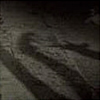

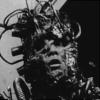


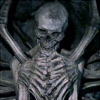

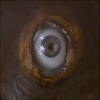

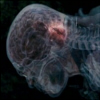
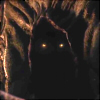

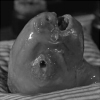



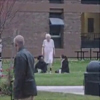
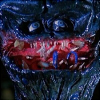


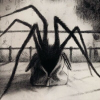


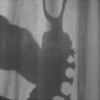

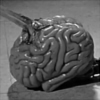



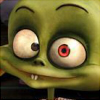

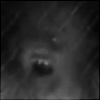
WAYS YOU CAN SUPPORT THIS SITE!

